This article was co-authored by Robert Dhir, MD. Dr. Robert Dhir is a board certified Urologist, Urological Surgeon, and the Founder of HTX Urology in Houston, Texas. With over 10 years of experience, Dr. Dhir’s expertise includes minimally-invasive treatments for enlarged prostate (UroLift), kidney stone disease, surgical management of urological cancers, and men’s health (erectile dysfunction, low testosterone, and infertility). His practice has been named a Center of Excellence for the UroLift procedure, and is a pioneer in non-surgical procedures for ED using his patented Wave Therapy. He earned his undergraduate and medical degrees from Georgetown University and was awarded honors in pre-medical studies, urology, orthopedics, and ophthalmology. Dr. Dhir served as chief resident during his urological surgical residency at University of Texas at Houston / MD Anderson Cancer Center in addition to completing his internship in general surgery. Dr. Dhir was voted Top Doctor in Urology for 2018 to 2019, one of the top three Best Rated Urologists in 2019 & 2020 for Houston Texas, and Texas Monthly has named him to the 2019 & 2020 Texas Super Doctors Rising Stars list.
There are 25 references cited in this article, which can be found at the bottom of the page.
wikiHow marks an article as reader-approved once it receives enough positive feedback. In this case, 87% of readers who voted found the article helpful, earning it our reader-approved status.
This article has been viewed 213,729 times.
Everyone recognizes that feeling of pressure as your bladder gets full, letting you know that it is time to urinate. People who suffer with bladder spasms do not have the comfort of feeling that pressure build gradually, allowing them to time their bathroom breaks according to their daily activities. Bladder spasms are involuntary contractions of the muscles that control the bladder. They occur without warning, cause a sudden sense of urgency to release urine, result in leakage, and can sometimes be quite painful.[1] They can cause a condition known as overactive bladder, or urge incontinence. Fortunately, there are things you can do to help control your bladder.
Steps
Treating Bladder Spasms with Muscle Training
-
1Strengthen your pelvic muscles. Performing Kegel exercises, also called pelvic floor exercises, can help to strengthen your pelvic muscles, which provide support for your bladder. Men can do Kegel exercises too![2] To begin strengthening your pelvic floor muscles, you first need to identify the right muscles.[3]
- When you urinate, use your muscles to stop the flow of urine midstream. If you can do this, you have identified one of the muscles involved with pelvic and bladder support. Do not continue to stop your urine flow, as this can increase the likelihood of developing other problems including urinary tract infections.[4]
- Another way to identify the right muscles is to imagine that you are trying to prevent from passing gas in a public place. Squeezing those muscles identifies the right muscles you need to exercise to strengthen your pelvic floor muscles.[5]
-
2Talk to your doctor.[6] Your doctor or a physical therapist can help you find other ways to properly identify the muscles you need to exercise in order to strengthen your pelvic floor muscles.[7]
- Once you are clear on the right muscles, take care not to contract, or squeeze, other muscles when you are doing your exercises. Contracting other muscles can put more pressure on your bladder.
- Also avoid holding your breath while you are doing your exercises.
Advertisement -
3Do your exercises often and in different positions. If your doctor agrees that this form of exercise might help, perform your pelvic exercises three times each day, and in three different positions.[8]
- Perform your exercises while lying down, sitting, and standing.
- Hold each squeeze for about three seconds, then relax for three seconds. Try to reach 10 to 15 repeats of the same exercise in each position.
- As you become more comfortable with these exercises, extend the length of the contraction.
-
4Be patient. It may take as long as two months to start seeing a difference in the frequency or severity of your bladder spasms.[9]
- Remember, strengthening your pelvic muscles through exercise may only be one part of an effective treatment plan to reduce, or get rid of, your bladder spasms.
Making Lifestyle Changes
-
1Implement a process called timed voiding. Keep track of the time of day when you most often have spasms, or leak urine. Develop a schedule of times throughout the day to urinate. Maintain this schedule for a few weeks to be sure you are emptying your bladder frequently enough to avoid spasms and leakage.[10]
- Gradually extend the time between voiding. This will gradually train your bladder to hold a little more urine, strengthening the muscles to prevent the spasms.
- Avoid drinking fluids within two hours of bedtime to help control of your bladder during the night.[11]
-
2Monitor what you eat. Some foods can trigger bladder spasms. Pay close attention to the foods you eat, and eliminate items that seem to be triggers for you.[12]
-
3Limit your intake of beverages that contain alcohol or caffeine. Beverages that have high levels of caffeine, such as coffee, tea, and soft drinks can lead to spasms. So can beverages that have high acid content, such as citrus fruit juices.[15]
- Alcoholic beverages and those with caffeine can cause your bladder to fill quickly, leading to leakage and spasms.
- Beverages that contain large amounts of citrus fruits can be irritating to your bladder, and lead to bladder spasms.
- Try spacing out what you drink over the day, rather than drinking a large quantity in a short period of time.[16]
-
4Avoid bubble baths. Harsh soaps and the ingredients in bubble baths have been reported to trigger bladder spasms.[17]
- The ingredients in bubble bath products and soaps that contain fragrances or harsh ingredients can be irritating to your bladder, and lead to spasms.
- Sitting in a warm bath, without any bubble bath soap added, can help relieve your symptoms.[18]
-
5Monitor your weight. Being overweight puts added pressure on your bladder. Talk with your doctor to determine a healthy weight loss program to aid in controlling your bladder spasms.[19]
-
6Stop smoking. In addition to being bad for your health in general, smoking irritates your bladder muscles. "Smoker's cough," a chronic cough caused by lung irritation due to smoking, can also trigger bladder spasms and can cause leaking.[20]
- Talk to your doctor about smoking cessation programs. You can also refer to Quit Smoking for more tips.
Seeking Medical Help
-
1Ask your doctor about medications. Some medications are approved for use in helping to provide control of your bladder. Some agents work to prevent leakage, and other work to control the unwanted muscle contractions or spasms.[21]
- Anticholinergics are bronchodilators, which means they work to stop certain muscles from tightening. For bladder spasms, they help reduce the frequency of involuntary bladder contraction.[22] The medications in this class include propantheline, oxybutynin, tolterodine tartrate, darifenacin, trospium, and solifenacin succinate. These medications may cause dry mouth and other side effects, include constipation, blurred vision, heartbeat irregularities, and drowsiness.
- Tricyclic antidepressants may be used in some cases, since they have anticholinergic aspects.[23] The most commonly prescribed include imipramine hydrochloride and doxepin. These agents help to control the smooth muscle tissue in the bladder.
- Alpha blockers can be prescribed to reduce overactive bladder symptoms by decreasing bladder contractions and relaxing muscles. Common agents are prazosin and phenoxybenzamine.[24]
-
2Work with your doctor to prevent drug interactions. All drugs have side effects and many can interact with other drugs. The interactions can be serious in many cases.[25]
- By working with your doctor, your existing drug regimen will be considered as your doctor considers safely adding new agents that can help to manage your bladder spasms.[26]
-
3Consult your doctor before trying alternative and herbal therapies. Use them only with caution. There is little to no evidence that supports the effectiveness of using herbal and alternative remedies to treat bladder spasms. Always consult your doctor before using herbal and alternative therapies as they can cause problems with your prescribed medications and existing medical conditions.
- Few studies in humans have been done to measure the effectiveness of alternative and herbal remedies to help control bladder problems, including spasms.
- Some small evidence is available for Japanese and Chinese herbs, but the results are very limited and not adequate to support recommending their use for this problem.
-
4Consider acupuncture. Several studies suggest that bladder-specific acupuncture can bring relief to people with overactive bladder and spasms.[27] Ask your doctor for a referral to a licensed acupuncturist with knowledge of bladder conditions.
- Most states require acupuncturists to be licensed through the National Certification Commission for Acupuncture and Oriental Medicine (NCCAOM). Finding a licensed acupuncturist will help ensure that you receive appropriate care.
- Keep your doctor informed of alternative therapies you're trying. This way, all of your healthcare providers can work in conjunction with each other to provide you with the best possible care.
-
5Ask your doctor about electrical stimulation devices. Electrical stimulation devices, similar to a TENS unit, can sometimes be used to help stimulate the nerves or the muscles in a routine manner to prevent the sudden spasms.[28] Usually, this form of treatment is not considered a first-line treatment option.[29]
- Many of the devices require minor surgery to implant the actual device and find proper placement for the electrodes.
- Interventions of this type are most often used to control bladder problems that may or may not be directly related to spasms. Common use of electrical stimulation devices are for conditions such as overactive bladder syndrome, stress incontinence, and urinary urge incontinence.
-
6Consider surgery. The surgical procedure options to control your bladder spasms or related bladder problems are based on the underlying cause of the problem. Your doctor can best advise you on the risks and benefits of proceeding with a surgical procedure.[30]
- Surgical interventions for bladder spasms are only recommended in people that suffer from severe detrusor muscle over-activity, meaning severe and painful episodes of bladder spasms, and in those that have not responded to other treatment options.
Identifying the Reason for the Bladder Spasms
-
1Consider weakened muscles. The bladder is controlled by several muscle groups. Those groups include the sphincter muscles, the abdominal wall muscles, and one additional muscle that is part of the bladder itself. The most common culprit behind bladder spasms is the detrusor smooth muscle, which is the main muscle composing the bladder wall.[31]
- The detrusor muscle consists of smooth muscle fibers that are part of the wall of the bladder. The detrusor muscle contracts, along with the abdominal wall muscles, to empty the contents of the bladder into the urethra. However, all of the muscle groups are involved in emptying the bladder and may be a part of the problem, so you should see your doctor for a full diagnosis.
- The sphincter muscle provides a tightening at the opening of the bladder to prevent urine from passing. When the brain signals the muscles that it is time to release urine from the bladder, the sphincter muscle relaxes to allow the urine flow to pass through the urethra.
- The urethra is the tube that connects your bladder to the outside.
- The muscles of the abdominal wall are in a relaxed state when the bladder is empty and as it gradually fills with urine. The abdominal wall muscles gently expand as the bladder expands.
- The abdominal wall muscles and the sphincter muscles work together to provide bladder control. When the brain says it is time to release urine, the abdominal wall muscles contract, or tighten, and press on the bladder to force the urine into the urethra.
- The muscles and the nervous system work together to effectively communicate with the brain and provide voluntary control over emptying your bladder. A problem with any of the muscles or nerves involved can contribute to bladder spasms.
-
2Be aware of possible nerve damage that can cause bladder spasms. The nerves that are built into the bladder area are part of a complex communication pathway that sends messages to, and receives messages from, the brain.[32]
- Nerves that are part of the bladder and abdominal wall area tell the brain when the bladder is full and it needs to be emptied.
- This is translated as a feeling of pressure that lets you know it is time to release the urine stored in the bladder.
- Damaged nerves can send signals to the muscles to contract at the wrong time, causing spasms.
- Some medical conditions that interfere with nerve signals that involve bladder contraction include diabetes, Parkinson’s, multiple sclerosis, and stroke.
- Other conditions that cause the nerves to be damaged are back surgery, pelvic conditions or surgery, back problems such as herniated discs, and radiation exposure.
-
3Rule out an infection. Bladder or kidney infections can cause the muscles to suddenly spasm. The irritation from the infection cues the bladder muscles to squeeze or contract, resulting in a spasm. A urinary tract infection is temporary. The bladder control problems resolve once the infection is properly treated.[33]
- If you feel you may have a bladder or kidney infection, seek medical treatment as soon as possible to obtain a prescription for the appropriate antibiotic to treat the infection.
- Symptoms of a urinary tract infection include a strong and frequent urge to urinate, passing small amounts of urine, a burning sensation or pain when urinating, cloudy, discolored, or visible blood in the urine, strong smelling urine, and pelvic pain.
-
4Review your medications with your doctor. Some medications can cause bladder spasms. Talk to your doctor if you are taking medications for other conditions that might be contributing to your bladder spasms.
- Not every medication causes problems. Even the drugs that might cause problems do not cause them in every person.
- Do not stop or alter any of your medications. Talk with your doctor about your bladder spasms and your current medication regimen.
- If you are taking a drug that might be contributing to the bladder spasms, dose adjustments under the direction of your doctor might help while still providing control of your medical condition.
- Examples of medications that can cause bladder control problems include drugs prescribed that help you to relax, manage symptoms of anxiety, help you to sleep at night, muscle relaxers, diuretics, or medications used to treat nerve damage including conditions like fibromyalgia.[34]
-
5Use the appropriate catheter for your condition. In many cases, the use of catheters either inserted by healthcare professionals or those that can be self-inserted, can cause bladder spasms.[35]
- Your body recognizes the catheter as a foreign substance and contracts or spasms in an effort to remove it.
- Talk to your healthcare provider to select a catheter that is as comfortable as possible, is the proper size, and is made of materials that may be less irritating.
-
6Realize that more than one reason may be at work. In some cases, more than one possible cause of your bladder spasms may be contributing to your bladder spasms.
- For example, you may have weakened muscles or mildly damaged nerves but no problems with bladder spasms. Becoming overweight or drinking caffeinated beverages, combined with the weakened muscles or damaged nerves, may be enough to cause you to develop bladder spasms.[36]
- Recognizing that several factors can be causing your bladder spasms can help you to work towards resolution of this problem by implementing a combination of different approaches to treatment.
Expert Q&A
-
QuestionWhat treatment will heal a bladder infection?
 Robert Dhir, MDDr. Robert Dhir is a board certified Urologist, Urological Surgeon, and the Founder of HTX Urology in Houston, Texas. With over 10 years of experience, Dr. Dhir’s expertise includes minimally-invasive treatments for enlarged prostate (UroLift), kidney stone disease, surgical management of urological cancers, and men’s health (erectile dysfunction, low testosterone, and infertility). His practice has been named a Center of Excellence for the UroLift procedure, and is a pioneer in non-surgical procedures for ED using his patented Wave Therapy. He earned his undergraduate and medical degrees from Georgetown University and was awarded honors in pre-medical studies, urology, orthopedics, and ophthalmology. Dr. Dhir served as chief resident during his urological surgical residency at University of Texas at Houston / MD Anderson Cancer Center in addition to completing his internship in general surgery. Dr. Dhir was voted Top Doctor in Urology for 2018 to 2019, one of the top three Best Rated Urologists in 2019 & 2020 for Houston Texas, and Texas Monthly has named him to the 2019 & 2020 Texas Super Doctors Rising Stars list.
Robert Dhir, MDDr. Robert Dhir is a board certified Urologist, Urological Surgeon, and the Founder of HTX Urology in Houston, Texas. With over 10 years of experience, Dr. Dhir’s expertise includes minimally-invasive treatments for enlarged prostate (UroLift), kidney stone disease, surgical management of urological cancers, and men’s health (erectile dysfunction, low testosterone, and infertility). His practice has been named a Center of Excellence for the UroLift procedure, and is a pioneer in non-surgical procedures for ED using his patented Wave Therapy. He earned his undergraduate and medical degrees from Georgetown University and was awarded honors in pre-medical studies, urology, orthopedics, and ophthalmology. Dr. Dhir served as chief resident during his urological surgical residency at University of Texas at Houston / MD Anderson Cancer Center in addition to completing his internship in general surgery. Dr. Dhir was voted Top Doctor in Urology for 2018 to 2019, one of the top three Best Rated Urologists in 2019 & 2020 for Houston Texas, and Texas Monthly has named him to the 2019 & 2020 Texas Super Doctors Rising Stars list.
Board Certified Urologist & Urological Surgeon Typically antibiotics are prescribed to treat a bladder infection. Talk to your doctor if you're experiencing symptoms so they can test you and give you an appropriate treatment.
Typically antibiotics are prescribed to treat a bladder infection. Talk to your doctor if you're experiencing symptoms so they can test you and give you an appropriate treatment. -
QuestionHow can I relax my bladder naturally?
 Robert Dhir, MDDr. Robert Dhir is a board certified Urologist, Urological Surgeon, and the Founder of HTX Urology in Houston, Texas. With over 10 years of experience, Dr. Dhir’s expertise includes minimally-invasive treatments for enlarged prostate (UroLift), kidney stone disease, surgical management of urological cancers, and men’s health (erectile dysfunction, low testosterone, and infertility). His practice has been named a Center of Excellence for the UroLift procedure, and is a pioneer in non-surgical procedures for ED using his patented Wave Therapy. He earned his undergraduate and medical degrees from Georgetown University and was awarded honors in pre-medical studies, urology, orthopedics, and ophthalmology. Dr. Dhir served as chief resident during his urological surgical residency at University of Texas at Houston / MD Anderson Cancer Center in addition to completing his internship in general surgery. Dr. Dhir was voted Top Doctor in Urology for 2018 to 2019, one of the top three Best Rated Urologists in 2019 & 2020 for Houston Texas, and Texas Monthly has named him to the 2019 & 2020 Texas Super Doctors Rising Stars list.
Robert Dhir, MDDr. Robert Dhir is a board certified Urologist, Urological Surgeon, and the Founder of HTX Urology in Houston, Texas. With over 10 years of experience, Dr. Dhir’s expertise includes minimally-invasive treatments for enlarged prostate (UroLift), kidney stone disease, surgical management of urological cancers, and men’s health (erectile dysfunction, low testosterone, and infertility). His practice has been named a Center of Excellence for the UroLift procedure, and is a pioneer in non-surgical procedures for ED using his patented Wave Therapy. He earned his undergraduate and medical degrees from Georgetown University and was awarded honors in pre-medical studies, urology, orthopedics, and ophthalmology. Dr. Dhir served as chief resident during his urological surgical residency at University of Texas at Houston / MD Anderson Cancer Center in addition to completing his internship in general surgery. Dr. Dhir was voted Top Doctor in Urology for 2018 to 2019, one of the top three Best Rated Urologists in 2019 & 2020 for Houston Texas, and Texas Monthly has named him to the 2019 & 2020 Texas Super Doctors Rising Stars list.
Board Certified Urologist & Urological Surgeon I suggest sitting in a warm bath. Just avoid bubble bath or soaps, which may trigger spasms.
I suggest sitting in a warm bath. Just avoid bubble bath or soaps, which may trigger spasms. -
QuestionThe more I move the more I experience spasms. Should I limit physical activity in order to lessen the spasms?
 Chris M. Matsko, MDDr. Chris M. Matsko is a retired physician based in Pittsburgh, Pennsylvania. With over 25 years of medical research experience, Dr. Matsko was awarded the Pittsburgh Cornell University Leadership Award for Excellence. He holds a BS in Nutritional Science from Cornell University and an MD from the Temple University School of Medicine in 2007. Dr. Matsko earned a Research Writing Certification from the American Medical Writers Association (AMWA) in 2016 and a Medical Writing & Editing Certification from the University of Chicago in 2017.
Chris M. Matsko, MDDr. Chris M. Matsko is a retired physician based in Pittsburgh, Pennsylvania. With over 25 years of medical research experience, Dr. Matsko was awarded the Pittsburgh Cornell University Leadership Award for Excellence. He holds a BS in Nutritional Science from Cornell University and an MD from the Temple University School of Medicine in 2007. Dr. Matsko earned a Research Writing Certification from the American Medical Writers Association (AMWA) in 2016 and a Medical Writing & Editing Certification from the University of Chicago in 2017.
Family Medicine Physician You may want to do Kegel exercises if you are having bladder spasms. Further, you may want to consider taking medication for your bladder spasms. Medications include tricyclic antidepressants and parasympathetic acting agents. Talk to your doctor about this as a possibility.
You may want to do Kegel exercises if you are having bladder spasms. Further, you may want to consider taking medication for your bladder spasms. Medications include tricyclic antidepressants and parasympathetic acting agents. Talk to your doctor about this as a possibility.
References
- ↑ Robert Dhir, MD. Board Certified Urologist & Urological Surgeon. Expert Interview. 23 September 2020.
- ↑ https://www.uclahealth.org/urology/prostate-cancer/kegel-exercises-for-men
- ↑ https://my.clevelandclinic.org/health/articles/14611-kegel-exercises
- ↑ https://my.clevelandclinic.org/health/diseases/9135-urinary-tract-infections#prevention
- ↑ https://www.niddk.nih.gov/health-information/urologic-diseases/kegel-exercises
- ↑ Robert Dhir, MD. Board Certified Urologist & Urological Surgeon. Expert Interview. 23 September 2020.
- ↑ https://www.niddk.nih.gov/health-information/urologic-diseases/bladder-control-problems/treatment
- ↑ https://www.niddk.nih.gov/health-information/urologic-diseases/kegel-exercises
- ↑ https://www.niddk.nih.gov/health-information/urologic-diseases/kegel-exercises
- ↑ http://www.mayoclinic.org/healthy-lifestyle/mens-health/in-depth/kegel-exercises-for-men/art-20045074
- ↑ https://medlineplus.gov/ency/article/001270.htm
- ↑ https://www.niddk.nih.gov/health-information/urologic-diseases/bladder-control-problems/prevention
- ↑ https://medlineplus.gov/ency/article/001270.htm
- ↑ https://my.clevelandclinic.org/health/diseases/14248--overactive-bladder-#management-and-treatment
- ↑ https://medlineplus.gov/ency/article/001270.htm
- ↑ http://my.clevelandclinic.org/services/urology-kidney/diseases-conditions/hic-overactive-bladder
- ↑ https://medlineplus.gov/ency/article/001270.htm
- ↑ Robert Dhir, MD. Board Certified Urologist & Urological Surgeon. Expert Interview. 23 September 2020.
- ↑ https://my.clevelandclinic.org/health/diseases/14248--overactive-bladder-
- ↑ https://my.clevelandclinic.org/health/diseases/14248--overactive-bladder-/management-and-treatment
- ↑ https://www.niddk.nih.gov/health-information/urologic-diseases/bladder-control-problems/treatment
- ↑ Robert Dhir, MD. Board Certified Urologist & Urological Surgeon. Expert Interview. 23 September 2020.
- ↑ http://emedicine.medscape.com/article/321273-medication#5
- ↑ http://emedicine.medscape.com/article/321273-medication#3
- ↑ https://www.fda.gov/drugs/resources-you-drugs/drug-interactions-what-you-should-know
- ↑ http://www.nlm.nih.gov/medlineplus/ency/article/001270.htm
- ↑ http://www.ncbi.nlm.nih.gov/pubmed/15994629
- ↑ https://www.ncbi.nlm.nih.gov/pmc/articles/PMC5121741/
- ↑ http://patient.info/doctor/detrusor-instability-and-irritable-bladder
- ↑ https://www.nafc.org/bhealth-blog/surgery-for-overactive-bladder
- ↑ https://www.ncbi.nlm.nih.gov/pmc/articles/PMC1472851/
- ↑ https://www.niddk.nih.gov/health-information/urologic-diseases/bladder-control-problems/definition-facts
- ↑ https://www.niddk.nih.gov/health-information/urologic-diseases/bladder-control-problems/definition-facts
- ↑ https://www.niddk.nih.gov/health-information/urologic-diseases/bladder-control-problems/symptoms-causes
- ↑ https://my.clevelandclinic.org/health/treatments/15434-clean-intermittent-catheterization
- ↑ https://www.niddk.nih.gov/health-information/urologic-diseases/bladder-control-problems/symptoms-causes
About This Article
To control bladder spasms naturally, strengthen your pelvic muscles with Kegel exercises. Begin by stopping the flow of urine mid-stream, and notice which muscles you use. Do the same as you imaging you’re trying to prevent passing gas. To exercise these muscles, squeeze for each 3 seconds, relax for 3 seconds, and repeat between 10-15 times, 3 times a day. To learn more about how to control bladder spasms from our Medical reviewer, like how to use timed voiding to reduce spasms and leakage, keep reading!

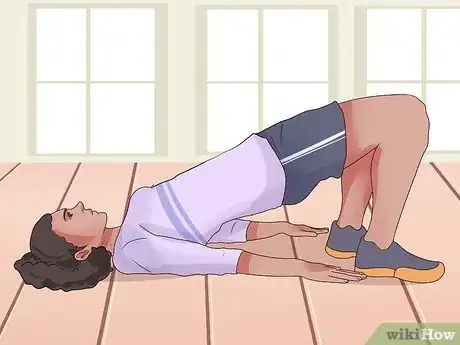
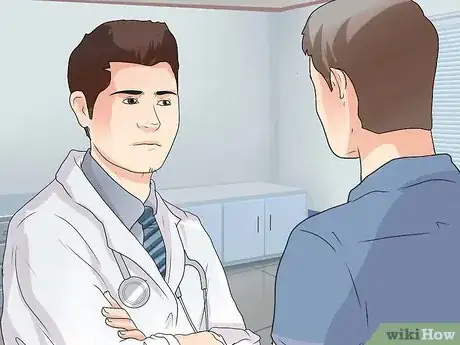
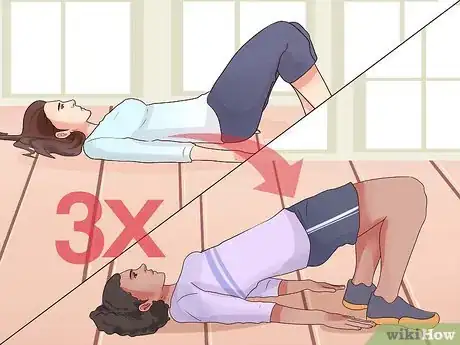
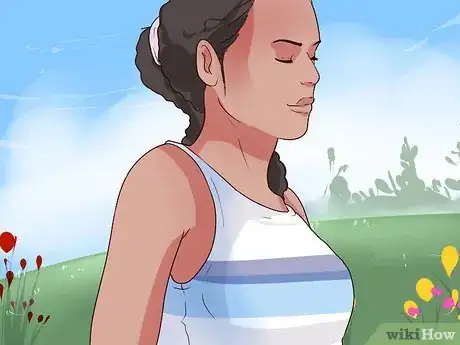
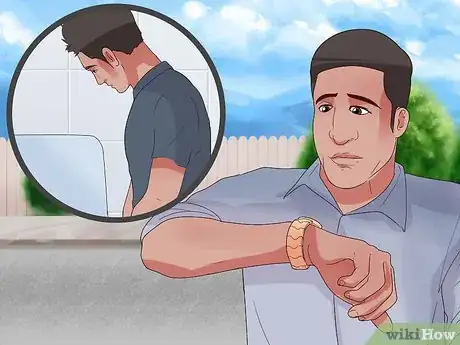
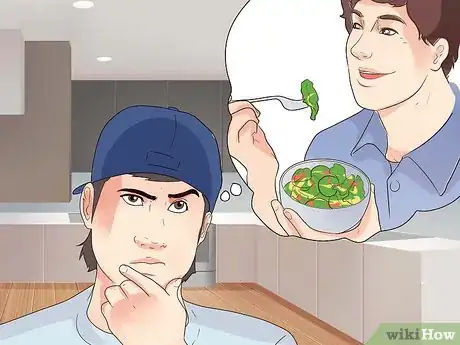

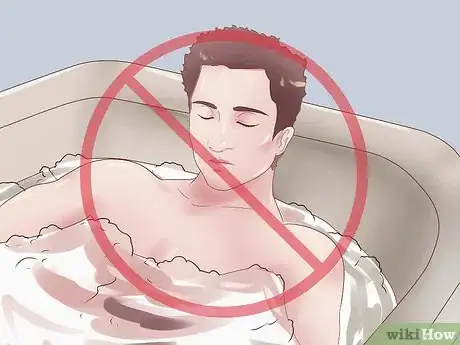
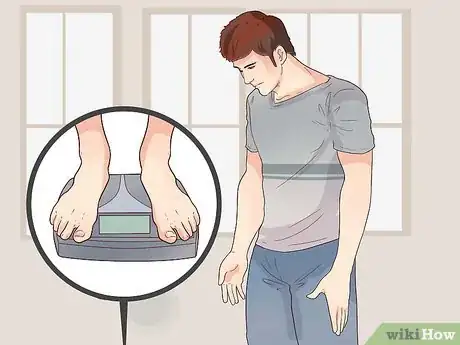
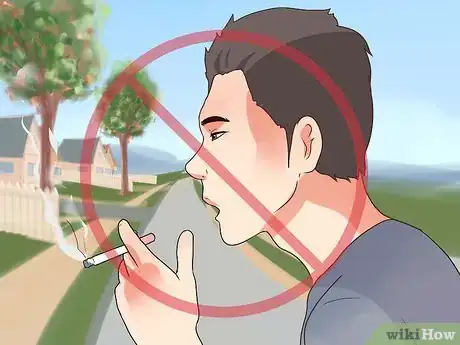
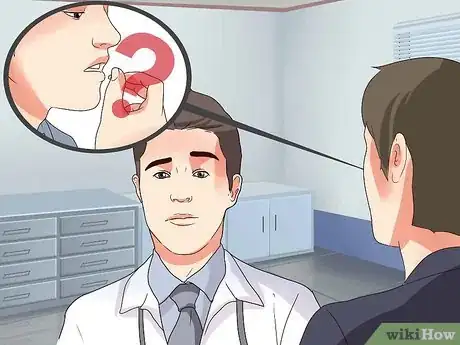
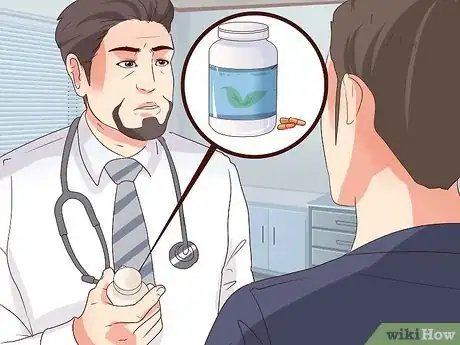


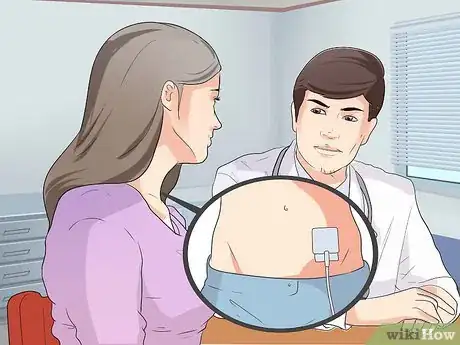
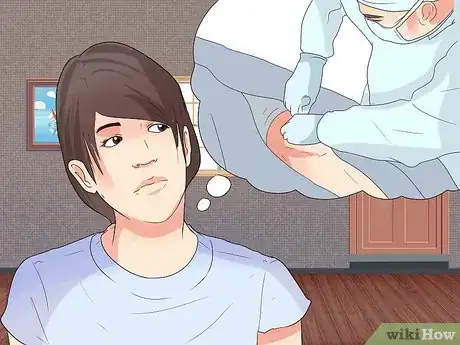
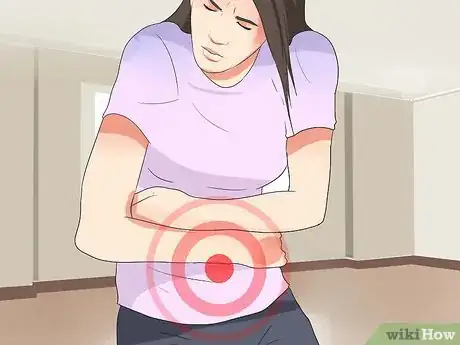
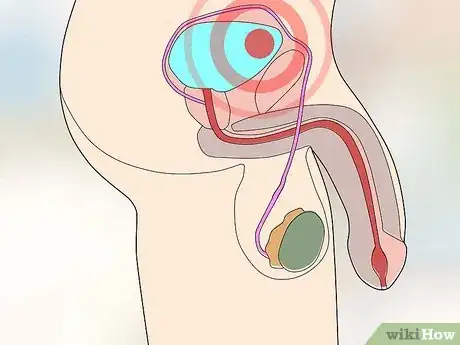
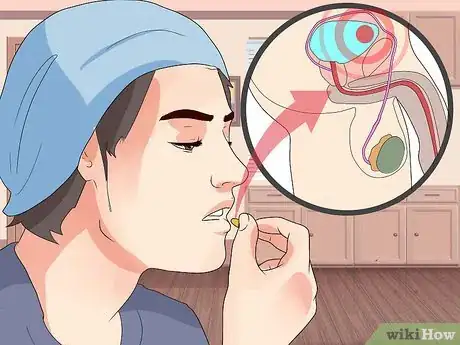
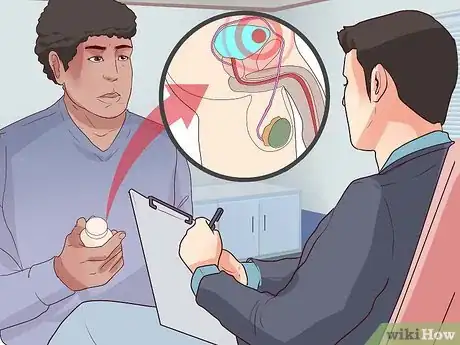

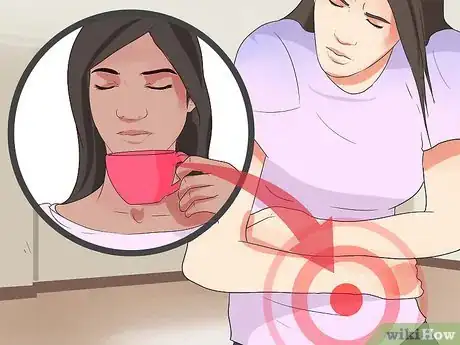
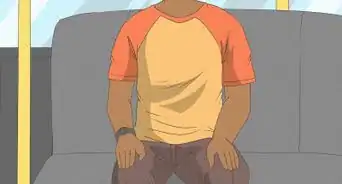
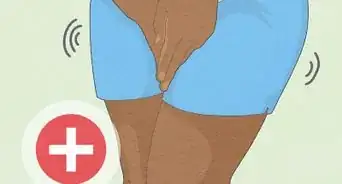


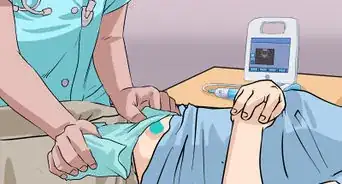
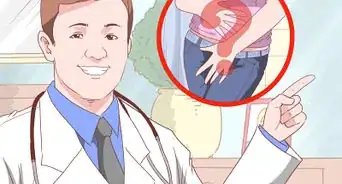

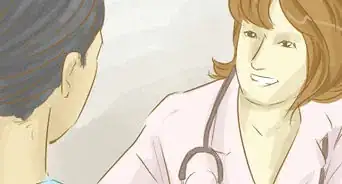
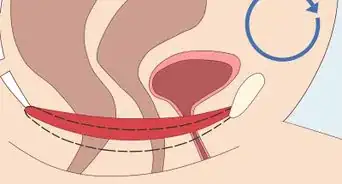

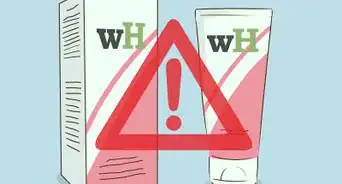
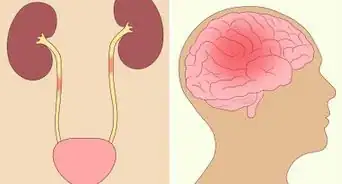
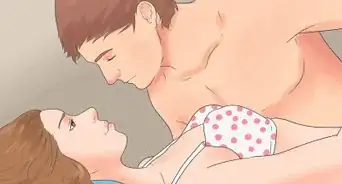








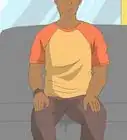
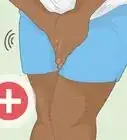
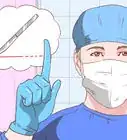




































Medical Disclaimer
The content of this article is not intended to be a substitute for professional medical advice, examination, diagnosis, or treatment. You should always contact your doctor or other qualified healthcare professional before starting, changing, or stopping any kind of health treatment.
Read More...